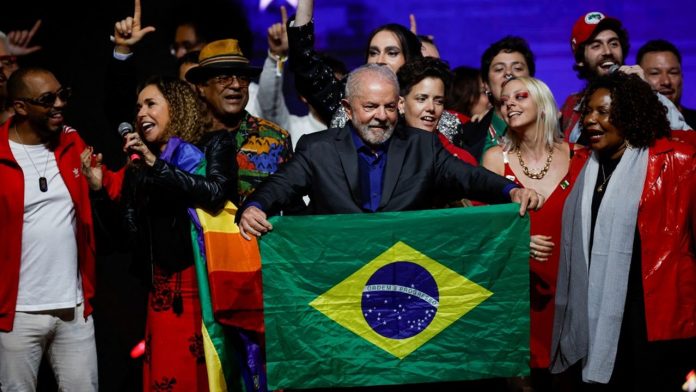Posted Oct 1, 2022, 12:03 PM
A third term for Lula as head of Brazil no longer scares Brazilian currency markets. In 2002, his election caused the real to fall by 2.3% – but his re-election four years later caused a fall of less than 1%, followed by a rebound within three months. Luiz Inacio Lula da Silva benefited during his presidencies from the sustained prices of raw materials (coffee, soya, corn, sugar), of which his country is a major exporter. The Brazilian currency benefited. The real rose 77% and 26% respectively during his two four-year terms.
While this time he is opposed to Jair Bolsonaro, “the markets do not seem to expect a radically different economic policy between the two candidates, whatever their campaign promises. Whoever wins, he will have to deal with a very fragmented Congress, and therefore find compromises,” said Dev Ashish, emerging strategist at Societe Generale.
For four weeks, hedge funds have been massive buyers of reals. Their speculative positions on the Brazilian currency have reached a record this year. The real gains 21% against the euro and even has the luxury of progressing against the dollar (+3%), which is the case for very few currencies, the major currencies (euro, yen, pound sterling) being on the contrary collapsed compared to their American counterpart.
Twelve rate hikes in a row
The very good performance of the real in the current international context owes a lot to the Bank of Brazil, the first in the emerging world to have raised its rates, starting in March. It then chained no less than 12 consecutive rate hikes until September when it marked a pause, but perhaps not definitively. Inflation is still around 11%, against a central bank target of 3.5%. The benchmark rate is 13.75%, compared to 2% at the start of the monetary tightening cycle. Société Générale anticipates that the Bank of Brazil will lower rates by 300 basis points in 2023. These easing measures should limit the real’s upside potential. The consensus of strategists established by the Bloomberg agency anticipates that in 2023 the dollar will fall, but modestly, by 1% to 3%, compared to its Brazilian counterpart.
The economy, which recovered in the second quarter, could grow by 1.7% this year and only 1.1% next year, according to the International Monetary Fund, due in particular to the sharp deterioration in the economy. worldwide (United States, China, Europe). “Lula’s program envisages a much more expansionary fiscal policy (lower taxes) than [celui de] Bolsonaro. It will increase the deficits and create all the more concerns about the public debt as it envisages at the same time heavy spending on infrastructure and health. As a result, the real could be weakened,” said Arthur Budaghyan, head of emerging markets strategy at BCA Research.













